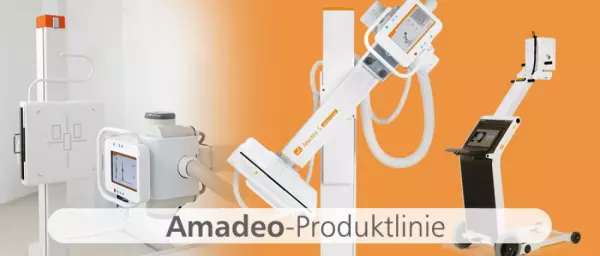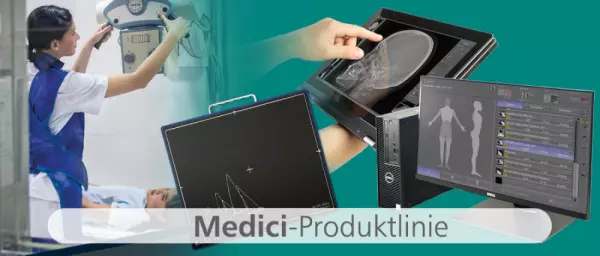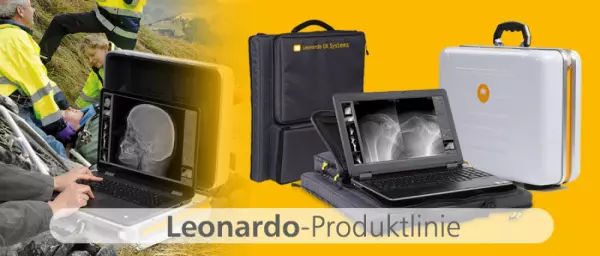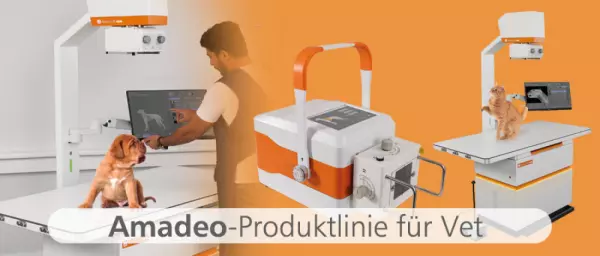
Stationary and mobile X-rays for human medicine
Amadeo Z motorised The compact U-arm X-ray system is motorised and designed for low ceiling heigh...
Portal and digital medical technology fair of the largest MedTech cluster in Germany

Stationary and mobile X-rays for human medicine
Amadeo Z motorised The compact U-arm X-ray system is motorised and designed for low ceiling heigh...

Lightweight X-ray suitcase for mobile use...
Leonardo DR mini III The gold standard for medical providers, disaster response and home care ser...

Compact desktop unit for digital X-ray
Digital X-ray with cassettes for standard X-ray examinations for vets The Divario CR-T2 is a...

Digital X-ray with cassettes with image plate systems for standard X-ray examinations The Divario...

DR retrofits (stationary and mobile) for...
Are you considering a digital alternative to your trusted stationary X-ray system? Is the time ripe...

Portable X-ray suitcase solutions for emergencies
Leonardo DR nano The wonderfully light, portable backpack X-ray system for emergencies Just s...

Stationary and mobile X-ray for small animals
Amadeo V mini II Systems Space-saving full X-ray system for veterinary medicine with s...

The selection of an x-ray system depends on the application and sensitivity required. The size of the object being imaged is the most important factor. Other considerations include the resolution and sensitivity required. CMOS and CCD detectors are widely used and come in multimegapixel area arrays. Amorphous-silicon detectors have pixels with a much larger size than CMOS, which makes them more expensive to produce.
The global X-ray market is dominated by hospitals & clinics, diagnostic centers, and ambulatory surgical centers. The increasing prevalence of hospitalization and the increased use of diagnostic imaging devices are driving growth in these markets. Further, increasing health care expenditure is creating a demand for high-quality, high-performance medical imaging equipment. Moreover, many manufacturers are focusing on scanning entire organs in four dimensions. Lastly, thermal noise can affect the image quality and operation life of key components.
X-ray systems are essential for diagnosis and treatment in medical facilities. With the increasing demand for healthcare, manufacturers have been working on improving the speed and image quality of X-ray machines. Many of them are developing 4D technology, which will allow them to image entire organs in a 3D format. In addition, thermal noise reduction is another important consideration for imaging quality. In addition to image resolution, the thermal noise generated by an x-ray system affects the long-term operation of its key components, such as the nitric oxide anode and a X-ray tube.
X-ray imaging systems are designed to meet federal and international radiation safety performance standards. To ensure patient safety, all X-ray systems must meet the requirements set by the U.S. Food and Drug Administration (FDA) in Title 21 Code of Federal Regulations, Subchapter J, Radiological Health. Prompt reporting of adverse events also helps the FDA identify the associated risks and improve products. Patients should follow the facility's procedures to report any adverse events.
In addition to medical applications, X-ray systems are used for industrial applications. Typically, these systems use two types of X-ray tubes: amorphous-silicon and bipolar. The former is commonly used in industrial settings. The latter is the most common type of X-ray. Depending on the application, it can be hard or soft to penetrate the body. Amorphous-silicon x-rays are generally considered to be a large object.
Xray systems can be classified into two main types: portable and stationary/fixed. The portable segment is expected to experience the fastest growth in the next five years. In addition, there are several x-ray systems designed specifically for mobile and handheld environments. There are many types of x-rays available for different applications. The smallest of these are for clinical use in hospitals, while the larger ones are ideal for home and commercial use.
Become a digital exhibitor yourself in the online portal of the largest and best-known MedTech cluster region in Germany and inform the world of medical technology about your products and services as well as about news, events and career opportunities.
With an attractive online profile, we will help you to present yourself professionally on our portal as well as on Google and on social media.